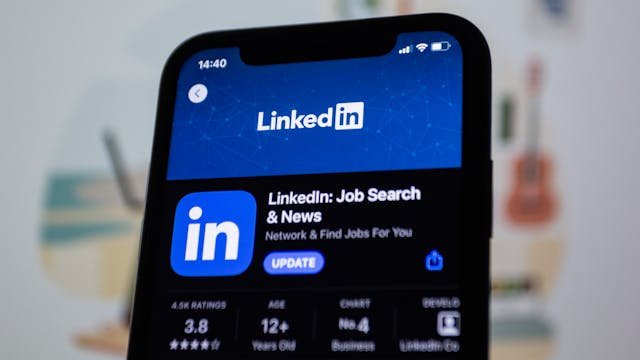Running a small business comes with its challenges, especially when it comes to marketing on a budget. However, with the right digital marketing strategies, you can achieve significant results without breaking the bank. Let’s explore some cost-effective digital marketing strategies that can help small businesses thrive.
Understanding Your Audience
Before diving into specific strategies, it’s essential to understand your target audience. Knowing who your customers are, what they need, and where they spend their time online can help you tailor your marketing efforts effectively. Start by creating buyer personas—detailed profiles of your ideal customers.
These personas should include demographic information, interests, online behaviors, and pain points. Once you have a clear picture of your audience, you can create more targeted and engaging marketing campaigns.
Leveraging Social Media
Social media platforms offer a powerful and cost-effective way to reach your audience. By creating and sharing valuable content, you can build a loyal following and engage with potential customers. Choose the platforms where your audience is most active. For many small businesses, this might be Facebook, Instagram, LinkedIn, or Twitter.
Engage with your audience by posting regularly and responding to comments and messages. Share a mix of content, including blog posts, videos, and customer testimonials. Use hashtags and participate in relevant conversations to increase your visibility. Social media advertising is also a cost-effective option.
Platforms like Facebook and Instagram allow you to target specific audiences based on demographics, interests, and behaviors. Start with a small budget and test different ads to see what works best.
Content Marketing
Creating valuable content can help you attract and retain customers. Blog posts, videos, infographics, and eBooks are all great ways to provide value to your audience. Focus on creating content that addresses your customers’ needs and pain points. This not only positions you as an expert in your field but also helps build trust with your audience.
Start a blog on your website and publish regular posts that offer useful information related to your industry. Use keyword research to identify topics that your audience is searching for and optimize your content for search engines. This can help drive organic traffic to your site.
Videos are another effective content format. They are engaging and can be shared across multiple platforms. Create how-to videos, product demonstrations, or behind-the-scenes looks at your business. Share these videos on your website, social media, and YouTube to reach a wider audience.
Email Marketing
Email marketing remains one of the most cost-effective digital marketing strategies. It allows you to reach your audience directly and nurture relationships over time. Start by building an email list. Offer something of value, such as a free eBook or discount, in exchange for email sign-ups.
Segment your email list based on customer behavior and preferences. This allows you to send targeted messages that are more likely to resonate with your audience. For example, you can send personalized product recommendations based on past purchases.
Create engaging email content that provides value to your subscribers. This could include newsletters, special offers, and updates about your business. Use email marketing platforms like Mailchimp or Constant Contact to automate your campaigns and track their performance.
Search Engine Optimization (SEO)
SEO is a crucial component of any digital marketing strategy, especially for small businesses looking to maximize their online presence without a significant investment. By optimizing your website and content for search engines, you can attract organic traffic and improve your visibility online.
Start with keyword research to identify the terms and phrases your potential customers are searching for. Use tools like Google Keyword Planner or Ubersuggest to find relevant keywords with good search volume and low competition. Incorporate these keywords naturally into your website content, including page titles, meta descriptions, headers, and body text.
On-page SEO is equally important. Ensure your website is user-friendly and mobile-responsive, as search engines prioritize mobile-friendly sites. Improve your site’s load speed, and use clear, descriptive URLs.
Internal linking, which involves linking to other relevant pages on your site, can also help improve your SEO.
Don’t forget about local SEO if your business serves a specific geographic area. Create a Google My Business profile and ensure your business name, address, and phone number (NAP) are consistent across all online directories. Encourage satisfied customers to leave positive reviews on Google, Yelp, and other review sites to boost your local search ranking.
Utilizing Influencer Marketing
Influencer marketing can be a cost-effective way to reach a broader audience. By partnering with influencers who have a strong following in your niche, you can leverage their credibility and reach to promote your products or services.
Start by identifying influencers who align with your brand values and target audience. Look for micro-influencers (those with smaller but highly engaged followings) as they often have higher engagement rates and are more affordable for small businesses.
Reach out to these influencers with a personalized message, explaining why you think they would be a great fit for your brand. Offer them something of value in return for promoting your business, such as free products, exclusive discounts, or a commission on sales generated through their referrals.
Work with the influencers to create authentic and engaging content that resonates with their audience. This could include product reviews, sponsored posts, or social media takeovers. Track the performance of your influencer campaigns to understand their impact and adjust your strategy as needed.
Leveraging User-Generated Content (UGC)
User-generated content (UGC) is a powerful and cost-effective way to build trust and engage with your audience. UGC includes any content created by your customers, such as reviews, testimonials, photos, and videos.
Encourage your customers to share their experiences with your products or services on social media. You can run contests or giveaways that incentivize users to post about your brand. Feature their content on your website and social media channels to show appreciation and build a sense of community.
UGC not only provides social proof but also helps you create a continuous stream of fresh content without additional costs. This can enhance your brand’s credibility and attract new customers who trust the recommendations of their peers.
Pay-Per-Click (PPC) Advertising
While PPC advertising involves some costs, it can be highly effective if done strategically. Platforms like Google Ads and Bing Ads allow you to target specific keywords and demographics, ensuring your ads reach the right audience.
Start by setting a modest budget and selecting relevant keywords for your ads. Use ad copy that is clear, concise, and includes a strong call to action. Test different variations of your ads to see which ones perform best.
Monitor your campaigns closely and adjust your bids, keywords, and ad copy based on performance. Focus on high-performing keywords and eliminate those that aren’t generating results. PPC advertising can drive immediate traffic to your site and complement your long-term SEO efforts.
Leveraging Analytics and Data

Understanding the performance of your marketing efforts is crucial for making informed decisions and optimizing your strategies. Use analytics tools like Google Analytics to track your website traffic, user behavior, and conversion rates. These insights can help you understand what’s working and what needs improvement.
Set up goals and track key performance indicators (KPIs) that align with your business objectives. For example, monitor metrics such as website visits, bounce rates, average session duration, and conversion rates. Use these insights to identify trends and make data-driven decisions.
A/B testing is another valuable tactic. By testing different versions of your web pages, emails, or ads, you can determine which elements perform best and refine your strategies accordingly. For instance, you can test different headlines, images, or calls to action to see what resonates most with your audience.
Building Relationships Through Community Engagement
Engaging with your community can foster loyalty and create a strong brand presence. Participate in online forums, groups, and social media communities related to your industry. Share your expertise, answer questions, and provide valuable insights to establish yourself as a thought leader.
Consider hosting webinars or live Q&A sessions to connect with your audience in real-time. These events can provide valuable content, answer customer questions, and build stronger relationships with your audience. Promote these events through your social media channels and email lists to maximize participation.
Offline engagement is also important. Attend local events, sponsor community activities, or collaborate with other local businesses. These efforts can increase your visibility and build strong local connections.
Implementing Retargeting Campaigns
Retargeting is an effective way to re-engage visitors who have previously interacted with your website or social media profiles. By using cookies to track these visitors, you can serve them targeted ads as they browse other websites or social media platforms.
Set up retargeting campaigns through platforms like Google Ads or Facebook Ads. Create ads that remind users of the products or services they viewed, offer special discounts, or highlight new arrivals. Retargeting can significantly improve your conversion rates by keeping your brand top-of-mind for potential customers.
Developing a Referral Program
Referral programs leverage the power of word-of-mouth marketing. Encourage your satisfied customers to refer friends and family to your business by offering incentives such as discounts, free products, or exclusive offers.
Create a simple and user-friendly referral system. Use referral codes, shareable links, or dedicated landing pages to track referrals and reward your customers. Promote your referral program through your website, email marketing, and social media channels to maximize participation.
Utilizing Free Marketing Tools
There are many free tools available that can help you execute and manage your digital marketing strategies. For instance, tools like Canva can help you create professional graphics for your social media and marketing materials. Mailchimp offers free plans for email marketing, and Hootsuite allows you to manage multiple social media accounts in one place.
Google’s suite of tools, including Google Analytics, Google My Business, and Google Trends, can provide valuable insights and enhance your marketing efforts without additional costs. Take advantage of these free resources to maximize your budget and improve your marketing effectiveness.
Creating Valuable Partnerships
Building partnerships with other businesses can be a cost-effective way to expand your reach and enhance your marketing efforts. Look for businesses that complement yours and share a similar target audience. Collaborate on joint marketing campaigns, such as co-hosted webinars, shared blog posts, or combined social media contests.
These partnerships can help you reach new audiences without significant financial investment. By leveraging each other’s strengths and resources, both businesses can benefit from increased exposure and customer engagement. Ensure that any partnerships are mutually beneficial and align with your brand values.
Optimizing Your Website for Conversions

Your website is often the first point of contact for potential customers, so optimizing it for conversions is crucial. Focus on creating a user-friendly experience that guides visitors towards taking action, whether that’s making a purchase, signing up for a newsletter, or contacting you for more information.
Ensure your website is visually appealing and easy to navigate. Use clear, concise calls to action (CTAs) that guide users towards your desired outcomes. For instance, if you want visitors to sign up for your email list, make the sign-up form prominent and simple to complete.
Test different elements of your website to see what drives the most conversions. This could include testing different headlines, images, or CTA buttons. Use the insights from these tests to continuously improve your website’s performance.
Engaging with Video Marketing
Video content is incredibly engaging and can be a powerful tool for small businesses. Creating videos doesn’t have to be expensive. With a smartphone and some basic editing software, you can produce high-quality videos that resonate with your audience.
Consider creating how-to videos, product demonstrations, customer testimonials, or behind-the-scenes looks at your business. Share these videos on your website, social media channels, and YouTube to reach a wider audience. Video content can help humanize your brand and build stronger connections with your customers.
Utilizing Webinars and Online Workshops
Webinars and online workshops are excellent ways to share your expertise and connect with your audience in real-time. These events can be used to educate your customers, showcase your products, and build your brand authority.
Choose topics that are relevant to your audience and provide real value. Promote your webinars through your email list, social media channels, and website to maximize attendance. During the webinar, engage with participants through Q&A sessions and interactive polls. This not only provides valuable insights but also strengthens your relationship with your audience.
Emphasizing Customer Retention
While acquiring new customers is important, retaining existing ones can be more cost-effective and beneficial in the long run. Focus on building strong relationships with your current customers through excellent customer service, personalized communication, and loyalty programs.
Send personalized follow-up emails after a purchase to thank customers and ask for feedback. Offer exclusive discounts or early access to new products as a reward for their loyalty. By providing a positive experience and maintaining regular communication, you can turn one-time buyers into repeat customers and brand advocates.
Exploring Niche Marketing
Niche marketing involves targeting a specific, well-defined segment of the market. By focusing on a smaller audience with specific needs, you can create highly targeted and effective marketing campaigns. This approach can be more cost-effective than trying to appeal to a broad audience.
Identify a niche that aligns with your business and has unmet needs. Develop content, products, and marketing messages that speak directly to this audience. By addressing their specific pain points and preferences, you can build a loyal customer base and stand out in a crowded market.
Leveraging Customer Reviews and Testimonials

Positive reviews and testimonials from satisfied customers can significantly enhance your credibility and attract new business. Encourage your customers to leave reviews on platforms like Google, Yelp, and social media.
Feature these testimonials prominently on your website and in your marketing materials. Authentic reviews provide social proof and can influence potential customers’ purchasing decisions. Respond to reviews, both positive and negative, to show that you value customer feedback and are committed to improving their experience.
Monitoring Industry Trends
Staying informed about industry trends can help you adapt your marketing strategies to stay relevant and competitive. Follow industry blogs, attend webinars and conferences, and participate in online communities to keep up with the latest developments.
Implementing new trends early can give you a competitive edge and show your audience that you are innovative and forward-thinking. For example, if live streaming becomes popular in your industry, consider integrating it into your social media strategy to engage with your audience in real-time.
Wrapping it up
Effective digital marketing doesn’t have to be expensive. For small businesses, the key is to implement strategies that provide the best return on investment while maximizing your reach and engagement. By understanding your audience, leveraging social media, and creating valuable content, you can build a strong online presence without significant financial outlay.
For startup founders and small business owners, these cost-effective digital marketing strategies can help you compete with larger companies and grow your business. Focus on creating value, building relationships, and continuously improving your efforts based on data and feedback. With the right approach, you can achieve significant results without breaking the bank.
READ NEXT:
- Transform Your Marketing Strategy with These 20 Innovative Ideas
- Customer Churn Rate Calculator by WinSavvy: Keep Your Customers Longer!
- Customer Lifetime Value Calculator: How Much Is Your Customer Worth?
- Customer Acquisition Cost Calculator: Keep Track Of Marketing Spend
- Ultimate Break-Even Calculator for Startups to Master Your Finances






















Comments are closed.